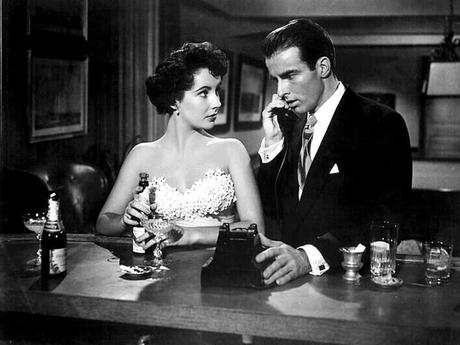
On March 30, 1908, Chester Gillette was executed after being convicted of the murder of Grace Brown. Gillette was the son of religious parents who were members of The Salvation Army and he later moved to New York to work in a skirt factory owned by his uncle. While working there, he began having an affair with fellow Grace, a fellow factory employee. When she became pregnant, she pressured him to marry her, but he kept stringing her along. Reportedly, he was also involved with a young socialite in town. Eventually, Chester agreed to take a trip with Grace to the Adirondack Mountains, presumably to get married. Instead, Chester convinced her to get into a rowboat with him where he hit her over the head and left her to drown.
The court case garnered significant media attention throughout the country and was the inspiration for Theodore Dreiser’s 1925 novel An American Tragedy. An American Tragedy went on to be adapted for the screen twice, first as 1931’s An American Tragedy and again in 1951 as A Place in the Sun.
Book & Movie Differences
The novel An American Tragedy is an extremely lengthy read. (The edition I read was 874 pages.) But neither the 1931 film or A Place in the Sun match the book’s epic length, clocking in at 96 minutes and 122 minutes respectively. Given that discrepancy, there’s naturally much from the book that was lost in translation from book to screen.
The novel is divided into three separate parts. Book 1 covers Clyde Griffiths’ youth in Kansas City as the child of poor street preachers. He’s never spiritually moved by his parents’ work and dreams of having something more in life, envying the people in town who have nicer things. As a teenager, he becomes a bellboy in a luxury hotel, starts making friends with his coworkers, and enjoys the thrill of making good money, choosing to lie to his mother about how much he earns so that he can spend more on himself than on his family. He also starts breaking away from his strict upbringing while going out with his hedonistic new friends and develops a serious weakness for women. One day, as Clyde is returning to town with his friends and some women, the person driving the car (borrowed without permission) fatally hits a young girl. Clyde and most of the others flee the accident scene and leave town. This whole section is largely omitted in A Place in the Sun, aside from Clyde’s mother working in a mission and fact that he didn’t grow up with much money. The 1931 film does include the car accident as well. Book 2 is focused on the main events depicted in both movies, from Clyde meeting his uncle while working as a bellboy and going to work in his uncle’s factory up until Roberta drowns. Book 3 covers the investigation into Roberta’s death, the search leading up to Clyde’s arrest, the trial, and Clyde’s time in prison afterward. It gets into a lot of procedural details of the case, like the political aspirations of the district attorney involved, Clyde’s legal team grasping at straws to build a defense, and the things that happen when a trial turns into a media circus.
(Note: A Place in the Sun changes all the characters’ original names. Clyde Griffiths became George Eastman, Roberta Alden became Alice Tripp, and Sondra Finchley became Angela Vickers. In this article, I use the original names when referencing the novel or the 1931 film and the other names when referencing A Place in the Sun.)
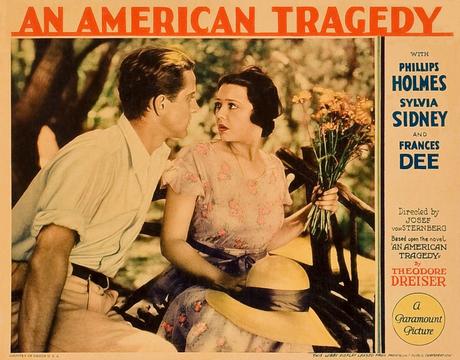
Over the years, there have been many cases of books/plays being adapted into movies that are highly criticized by their original authors. An American Tragedy (1931) is one of them. In this case, Dreiser and director Josef Von Sternberg and screenwriter Samuel Hoffenstein had differing views on what motivates Clyde Griffiths. Dreiser’s novel has a very heavy sociological perspective and shows Clyde as being highly driven by an obsession with wealth, luxury, and social status stemming from his destitute youth, often being looked at as an object of pity by people who were better off than his family. But Von Sternberg and Hoffenstein didn’t believe this was relevant and in cutting out so much of Book 1 in the film, this whole concept is lost. Dreiser so strongly disagreed with the direction of this adaptation that he (unsuccessfully) sued Paramount to prevent it from being released.
Dreiser passed away in 1945, so he didn’t live to see A Place in the Sun, but it’s likely he would have been critical of that as well since it heavily whitewashes the less palatable aspects of Clyde’s character, including that all-consuming drive for wealth and status. When we first see George in A Place in the Sun, we see he’s simply trying to make his way to a new job opportunity rather than trying to distance himself from a fatal car crash. He’s a handsome young man, the leather jacket he wears gives him a bit of a cool guy vibe, and the beginning largely has an optimistic tone to it. As for his infatuation with Angela, A Place in the Sun makes it seem like that is more about Angela herself than it is about Angela plus everything her upper-class lifestyle represents to him. In the book, it’s very clear that it’s Sondra’s combination of beauty and wealth that makes her the ultimate dream to him.
Despite Dreiser’s objections to the 1931 adaptation, there is quite a bit in it that stays closer to the source material than A Place in the Sun. It follows the text of the book more than the spirit of the book. For one, A Place in the Sun shows Clyde’s wealthy relatives as being warmer to him than they were in the book. Clyde’s cousin Gilbert in particular is highly skeptical of Clyde’s presence, which is reflected a little bit in the 1931 version. It also accurately shows Clyde as being Roberta’s superior when she starts working at the factory. In A Place in the Sun, George and Alice both have menial jobs in the same department, but in the book and the 1931 movie, he had recently been moved over to a supervisory position in the stamping department when Roberta starts working at the factory, which changes the power dynamics of their relationship. It also shows Clyde pressuring Roberta to let him into her room at night. She later relents after he gets angry with her for initially refusing. A Place in the Sun makes this all seem more consensual.
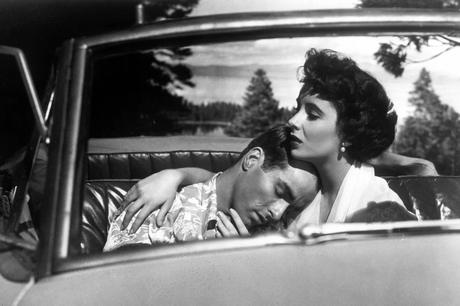
A Place in the Sun also makes Angela seem like more of a more sincere and viable long-term romantic partner for George. In the book, Sondra’s relationship with Clyde begins as something of a joke to get under the skin of Clyde’s cousin Gilbert, who hadn’t shown any interest in her. But while he does find a place in her social circle, the general consensus among the town’s social elite is that Clyde going to parties with this crowd is one thing. But with little money of his own and a rather vague background, he’s not seen as a suitable potential husband for anyone in that set. Mrs. Finchley tells Sondra that she sees no harm in her spending time with Clyde, but specifically warns her against getting too friendly and Sondra understands that her mother is right. There certainly wasn’t anything like the scene where her father gives his blessing for George to marry her like we see in A Place in the Sun. The book shows that Clyde wants to marry Sondra and tries to convince her to elope, but it’s also clear to readers that any ideas he has about actually making it to the altar are a pipe dream. There also weren’t any dramatic visits from Sondra before Clyde’s execution. The most Clyde got was a brief letter, which was unsigned but clearly from her.
One surprising way A Place in the Sun is actually more accurate to the book than its pre-Code era counterpart is the way it handles the efforts made to get an abortion for Roberta. The novel goes into extensive detail about this, starting with Clyde finding a pharmacist who provides something for Roberta to take, which only succeeds in making her ill. He later gets a tip about a doctor and takes Roberta to see him, but encourages her to go in by herself to seem more sympathetic. The scene with the doctor plays out much as it did in A Place in the Sun. The 1931 version, on the other hand, mostly shows Roberta pressuring Clyde to marry her, but a brief reference to the pharmacist and the doctor comes up during Clyde’s trial.
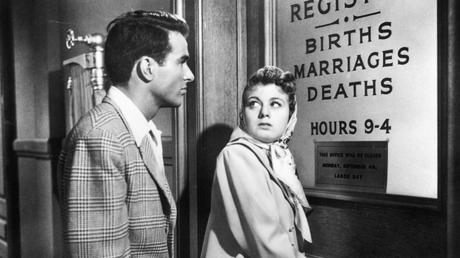
By far, one of the key things missing in both film adaptations is detail about the character of Roberta/Alice and what, exactly, Clyde/George saw in her. As I was reading the book, I couldn’t help but feel my heart sink as she was introduced because she was described as being such a lovely woman and I knew that things weren’t going to end well for her. Clyde had been warned to not get involved with the women who work at the factory, and until Roberta came along, he wasn’t really tempted to. Just like Clyde, Roberta came from a poor family and had a religious upbringing. She was a farm girl, like his mother. She’s pretty and when Clyde first meets her, he’s immediately taken with how bright and charming she is. She tries to be a moral and ethical person, but she’s not as uptight as other women with similar backgrounds that Clyde has met. She has a lot of agency over her own life. Also like Clyde, she dreams for something more in life than her destitute background has to offer, but her expectations are more grounded than Clyde’s. While Clyde’s family connections do appeal to her, it’s very clear that she was not actively trying to trap him by having a baby, like some might accuse her of.
The fact that the business owned by Clyde’s/George’s uncle is changed from a collar company in the book and 1931 movie to a bathing suit company in A Place in the Sun doesn’t materially change anything about the overall story, but it does change some of Dreiser’s original symbolism. In the book, it’s said that even cheap collars can add polish and manner to people who wouldn’t have them otherwise, so the collars serve as a metaphor for Clyde’s experience of coming to town to work for his uncle. When he was living with his family in Kansas City, his name made him someone that others looked down upon. But now that he’s in a town where his name is associated with a successful business owner, even being a lesser known member of the family is enough for people to take more interest in him than they would otherwise.
Is the Book Worth Reading?
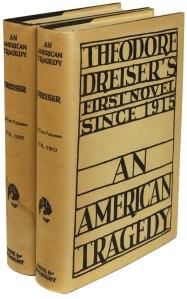
If you’re looking for a light, breezy read, An American Tragedy is definitely not what you want. But if you’re more in the mood for a in-depth character study about ambition, class, and the American dream, An American Tragedy holds up very well. There’s much in it that remains very relevant nearly a century after it was originally published. As long as the book is, I was surprised by how consistently engaging I found it. The only time I really started losing interest was during the some of the stuff about Clyde’s early time in Lycurgus after he moves to work for his uncle. If you’re into crime novels, you may like the third section of the book in particular.
I only began to scratch the surface of everything that is different between the book and its two film adaptations. There’s so much in the book that didn’t make it into either film version, like nearly everything in the first section, why Clyde’s uncle is so eager to help him out, and the efforts of Clyde’s mother to fund an appeal for him, just to name a few. You’ll definitely get a lot of new insights to the characters you know from the movie versions. This is the kind of story that absolutely could be adapted again as a miniseries. That kind of format would allow for more a more faithful adaptation and would be different enough from 1931’s An American Tragedy and A Place in the Sun that it would easily stand as its own work rather than as a movie remake.
Speaking of A Place in the Sun, this article might seem like I’m being hard on the movie. I would just like to note that I’m actually a big fan of the movie. While the 1931 version has more in common with the book, A Place in the Sun is the version I personally prefer. Hands down, A Place in the Sun has the better cast, although I liked Syliva Sidney as Roberta in the 1931 version. Many of the differences between the book and A Place in the Sun can be attributed to the fact that it was made during the production code era and there’s much in the book that is simply not production code friendly.
This review is part of the 2022 Classic Film Summer Reading Challenge hosted by Out of the Past. For more reviews on books related to classic film, be sure to follow the #ClassicFilmReading hashtag on social media.
